The time-tested variety of pepper "Kolobok" with an unusual shape and excellent taste
Gardeners have always been attracted to crops with unusual fruits. Therefore, breeders do not stop working on new varieties and hybrids that meet this demand. Thanks to this, an interesting round-shaped pepper called tomato pepper appeared on the market.
This is the shape of the Kolobok pepper. In addition to the unusual appearance, the fruits of this variety are distinguished by thick walls and a sweet taste. The plants themselves are famous for their unpretentiousness and resistance to adverse environmental factors. What else will delight Kolobok gardeners - read on.
The content of the article
What kind of pepper is this
Gingerbread man is a variety of pepper, bred by domestic breeders in 1979. Its originator is Yu. I. Panchev.
The variety was entered into the Russian state register in 1983. Since then, it has not lost its popularity. It is grown by gardeners in all countries of the former CIS.
Note! The seeds of the Kolobok harvest are used for cultivation. This is a varietal pepper, therefore, plants with the same characteristics are obtained from its seeds.
Distinctive features
The main distinguishing feature of the Kolobok is the unusual shape of its fruits. The peppers are round and resemble red tomatoes. It's especially easy to confuse them with the tomatoes in the photo.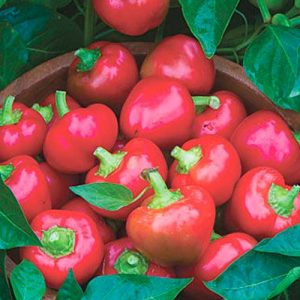
There is practically no free space inside the fruit. Its thick walls are in contact with the seeds. Fruit taste rich sweet with a slight sourness and peppery aroma. At the stage of technical ripeness, there is no bitterness.
Kolobok bushes are undersized. They do not require a garter or pinning, which greatly facilitates their care.
The variety also differs in increased immunity to diseases of nightshade crops. It is not afraid of cold snaps and is suitable for growing in the central and northern regions of our country.
Kolobok fruits are suitable for fresh consumption. Use them for conservation whole and in the form of lecho. This pepper is also suitable for freezing.
The only disease to which the variety has no resistance is fusarium wilt.
Main characteristics of Kolobok
The gingerbread man is suitable for growing in all regions of our country. It has a high yield and produces unusual round fruits.
Characteristics and description of the variety:
| Parameter | Indicators |
| Bush type | Shrub, determinant. Half-stamped. The height of the bush varies between 30-40 cm. The stems are thick and powerful. Bushes are highly branched. Ovary type is bouquet. The leaves are small, bright green with a slight wrinkle. |
| Growing method | Cold resistant. In the southern and central regions, they are grown outdoors. In cities with cold climates, peppers are planted in greenhouses. |
| Yield | High. From 1 sq. m harvest up to 6 kg. |
| Fruit | They are of medium size. The weight of one fruit varies between 100-150 g. The diameter of each fruit does not exceed 8 cm. The shape is round, with pronounced ribbing at the base extending to the whole body. The color is deep red. The wall thickness varies from 8 to 12 mm. In rare cases, the thickness of the walls reaches 2 cm. The taste of the fruit is sweet with a slight acidity. There is no bitterness even at the stage of technical maturity. |
| Transportability | High. The fruits are stored in a cool place for more than 2 weeks. Suitable for long distance transportation. |
| Ripening terms | Early ripe... The stage of technical maturity reaches 100-110 days. After 3-4 weeks, the fruits are ready for harvest. |
| Disease resistance | It is immune to most diseases of nightshade crops. |
Preparation for growing
Peppers are grown in seedlings. They do this both at home on the windowsill and in the greenhouse. In the second case, the seedlings will be stronger and more hardy.
It is important to prepare the soil for seedlings. It is purchased in the store (universal soil mixture or soil for tomatoes and peppers) or prepared independently.
To prepare soil for seedlings, use one of the following methods:
- take equal portions of peat and garden soil and add one part of sawdust to them;
- mix 2 parts of humus and 1 part of sod land.
Add 1 tbsp to a bucket of the resulting mixture. l. superphosphate and ash. Mix the ingredients thoroughly.
It is recommended to sow pepper directly into individual pots - it does not like picks. It is better to use peat containers, but a plastic container with drainage holes will work. Sometimes all seeds are sown in wooden and plastic boxes.
The soil and containers are disinfected. To do this, use a dark pink solution of potassium permanganate.
Seeds preparing for landing. They go through several stages of processing:
- The seeds are inspected for damage and dark spots. They are soaked in salted water at room temperature. After half an hour, the emerged specimens are thrown out, since they will not rise.
- Planting material is soaked for half an hour in a solution of potassium permanganate, for 15 min. in hydrogen peroxide or for 12 hours in aloe juice.
- Then the seeds are soaked in a growth stimulator for 24 hours. Purchased preparations "Epin", "Potassium humate" or "Agricola-3" are often used. For 1 liter of water at room temperature, take 1 tsp. facilities. Homemade recipes are also used. For example, 1 tsp. honey is bred in 1 tbsp. water.
- Planting material treated with a growth stimulator is wrapped in wet pieces of tissue and placed in the refrigerator for two days.... Then they are kept warm for a day and again in the refrigerator for a day.
Growing seedlings
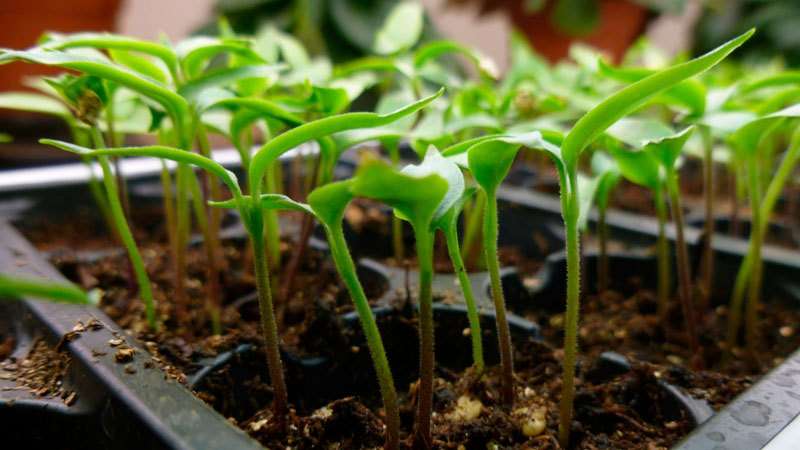
Seedlings begin to grow 80 days before the intended planting in open ground. The seeding time depends on the region:
- cities with southern climates - end of February;
- central regions - early March;
- northern regions - end of March.
Before proceeding with sowing seeds, the soil is brought into the room for 2 days. During this time, it will warm up.
Planting pepper
Sand and soil are poured into the boxes so that 4 cm remains free to the edge.The seeds are spread on the soil in rows, between which they leave 3 cm free.A distance of 2 cm is also left between the seeds.
The planting material is sprinkled with a three-centimeter layer of soil, watered with warm water with a growth stimulator, covered with a film and removed to a warm place.
If the seeds are grown immediately in individual pots, then 1 seed is sown into each container to a depth of 3 cm. This container is also covered with foil and placed in a warm place.
Further care
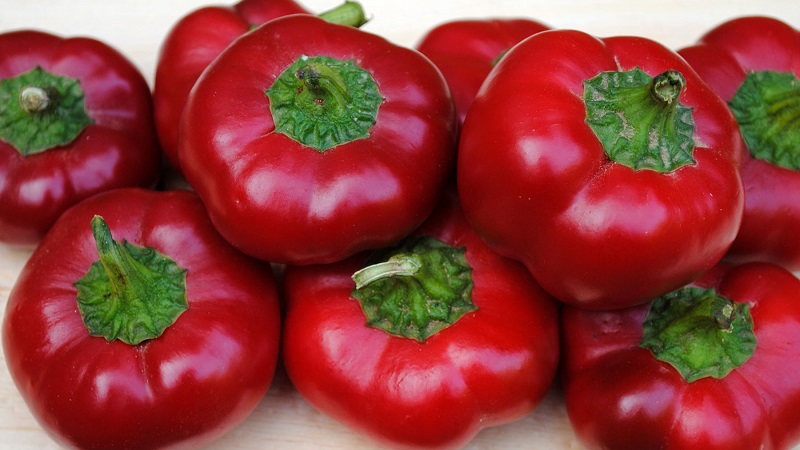
To get strong and healthy seedlings, you need to properly care for them. Here are the basic rules:
- After seed germination, the film is removed. The seedlings are rearranged in a well-lit place.
- To prevent the seedlings from tilting to one side, they are periodically turned towards the window. This does not have to be done if fluorescent lamps are used for backlighting.
- Water the plants 1-2 times a week. It is important not to allow the soil to dry out and waterlogged.
- After the formation of 2 true leaves, the seedlings are dived into individual containers (if the seeds were sown in a common box). Removing the plants, they are held by the leaves. The peppers are placed in pots without deepening the root collar. After picking, the plants are covered with newspaper for several days.
- A week before picking the pepper to a permanent place, they begin to harden it. To do this, they take it outside.
Seedlings are fed three times. Use the following scheme:
- 2 weeks after picking the soil sprinkle with ash. Then the plants are watered with a composition prepared from 10 tbsp. l. water and 1 tbsp. l. urea.
- After 2 weeks the plants water with 1 tsp.urea, divorced in 1 tbsp. water.
- 4 days before picking pepper to a permanent place make the last dressing. This time, use a product that is prepared from a bucket of water, 1 tbsp. l. urea and 1 tbsp. l. superphosphate.
Features of growing Kolobok
The Kolobok is planted in open ground when the soil warms up and the threat of frost has passed. This usually happens in the second half of May.
For pepper, choose a sunny, but protected from the wind area of the garden. The southern part of the land plot is best suited.
The beds on which other nightshade crops previously grew are not suitable for pepper. Do not stir other varieties of potatoes and peppers next to them.
Picking to a permanent place
The beds for growing pepper are prepared in the fall. They are dug up and cleaned of weeds. For every 1 sq. m of soil, 6 kg of cow dung or humus are introduced.
If the acidity of the soil is increased, it is reduced with dry lime or ash. Heavy soils are loosened with sand.
The holes are dug in rows. For 1 sq. m place 5-6 plants. Some gardeners use a thickened planting and planted 1 sq. m up to 9 peppers.
Before picking seedlings, 1 tbsp is poured into each hole. l. potash granular fertilizers. Then 1 liter of warm water is poured into the recesses.
Plants are planted in beds without deepening the root collar. To make the seedlings easier to remove from the pots, they are watered the day before the pick.
The beds are covered overnight with foil until mid-June. Shelter is also made during the day in cool weather.
Care rules
The gingerbread man does not need pinning and shaping. The productivity of this undersized variety is provided precisely by the branching of its bushes. You don't have to tie up the pepper either.
Water the pepper 1-2 times a week. Use warm water. For 1 sq. m add up to 12 liters of liquid. Before flowering, the beds are watered by rain. Then the liquid is poured only at the root.
After each watering, the soil is loosened. It must be cleared of weeds.
Advice! Experienced gardeners recommend mulching the soil with foil, straw, hay, humus or bark and tree leaves. This will slow down the growth of weeds, as well as protect the roots of plants from cold snaps and pests.
Peppers are fed at least 3 times per season. Purchased fertilizers (Agricola-3, Effekton-Universal) or home-made preparations are used. The list contains recipes for some of them:
- In a bucket of water, 1 kg of bird droppings are bred. The mixture is infused for 5 days, then 1 tsp is added to it. nitrophos and are used for watering bushes.
- A shell of 8 eggs and a peel of 5 bananas are insisted in a bucket of water for a day. The tool is used during the formation of ovaries.
- Chopped herbs (plantain, nettle, chamomile, etc.) are poured into the barrel. The green mass should fill half the volume. The rest of the space is filled with water. The mixture is infused for a week.
The day before fertilization, the peppers are watered with clean water so that the dressing does not burn the root.
The pepper is pollinated by insects. To attract pollinators, the bushes are sprayed with a product made from 10 liters of water, a glass of sugar and 1 tbsp. l. boric acid.
Advice! Many gardeners prepare fertilizer from weeds and plant debris collected from their own beds. Bread and jam are also added to the mixture for better fermentation.
Typical diseases and pests
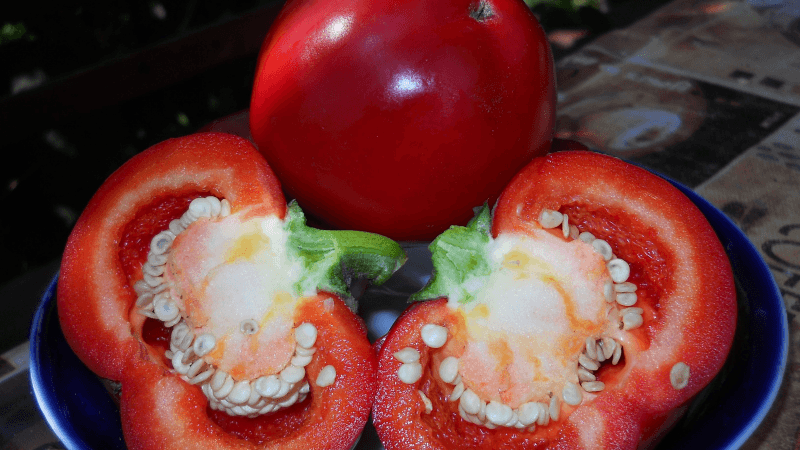
Sweet pepper Gingerbread man is not afraid of diseases of nightshade crops. It has no resistance only to fusarium wilt.
To protect plants from infection, it is important to follow all the rules of care. Particular attention is paid to the disinfection of soil and garden tools, as well as the removal of plant residues.
For the prevention of diseases, the bushes are treated with a weak solution of potassium permanganate or Bordeaux liquid.
Plants are often infested with pests. To combat them, the following methods are used:
- Leaves affected by aphids, spider mites or whiteflies are washed with warm water and soap (1 piece per 1 bucket of water).If this does not help, the plants are sprayed with Verticillin diluted in water (100 g per bucket). The procedure is carried out three times in 10 days.
- To protect the pepper from slugs, the soil is treated with quicklime every 2 days. For every 1 sq. m lay out 5 granules of metaldehyde.
To prevent a bear attack, the following methods are used:
- In the spring, they dig up the soil. Found larvae are destroyed.
- Traps are set in late autumn. To do this, grooves of 40 cm are made in the beds, which are filled with manure. In the spring, manure is dug up and burned along with the larvae that the bear will lay there.
Advantages and disadvantages of the variety
The advantages of the variety:
- disease resistance;
- no need for garters and pinning;
- high productivity;
- unusual shape of the fruit;
- thick walls and sweet pepper taste;
- cold resistance;
- unpretentious care.
Kolobok has no shortcomings.
Reviews
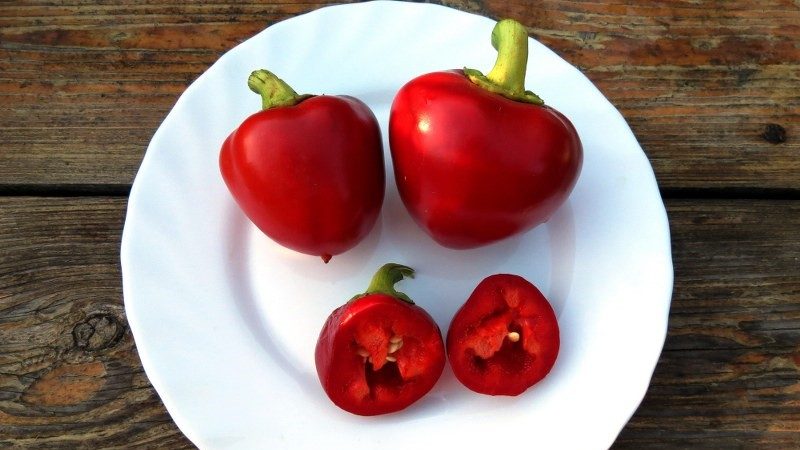
Most gardeners leave good reviews about Kolobok. This is one of the thickest and juiciest peppers.
Valeria, Solnechnogorsk: “It is not the first year that I have been growing Kolobok in the open field. Very unpretentious pepper, which is suitable even for summer cottages. The fruits are round, bright red, similar to tomatoes. As the photo on the package. Not sick, does not require frequent watering. "
Alexandra, Valuyki: “Gingerbread man decided to try it because of its unusual shape. Pepper really does not require garter and pinching. It is very easy to grow. The walls of the fruit are very thick. Ideal for lecho and salads. Such peppers look especially interesting when stuffed. "
Conclusion
Pepper Kolobok is one of the most unpretentious varieties of this culture. It is able to grow not only in the southern, but also in the central regions. At the same time, he does not need a garter, pinching and daily watering. This variety is suitable even for summer residents who do not visit the site every day.
Kolobok is famous not only for its unpretentious care. It is distinguished by its unusual round fruits with a sweet taste and thick walls. Try grow this variety, and he will surely delight you with a wonderful harvest.